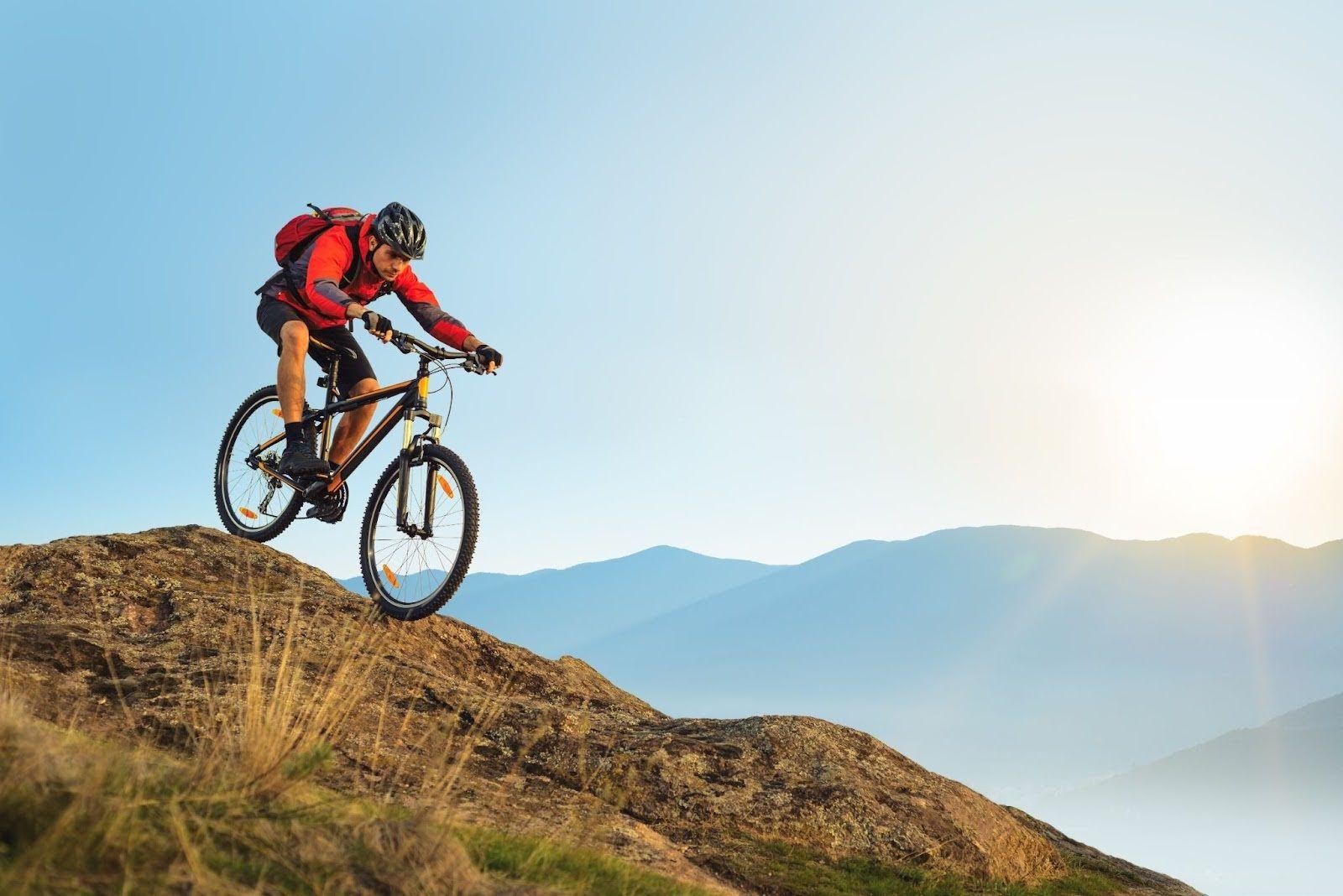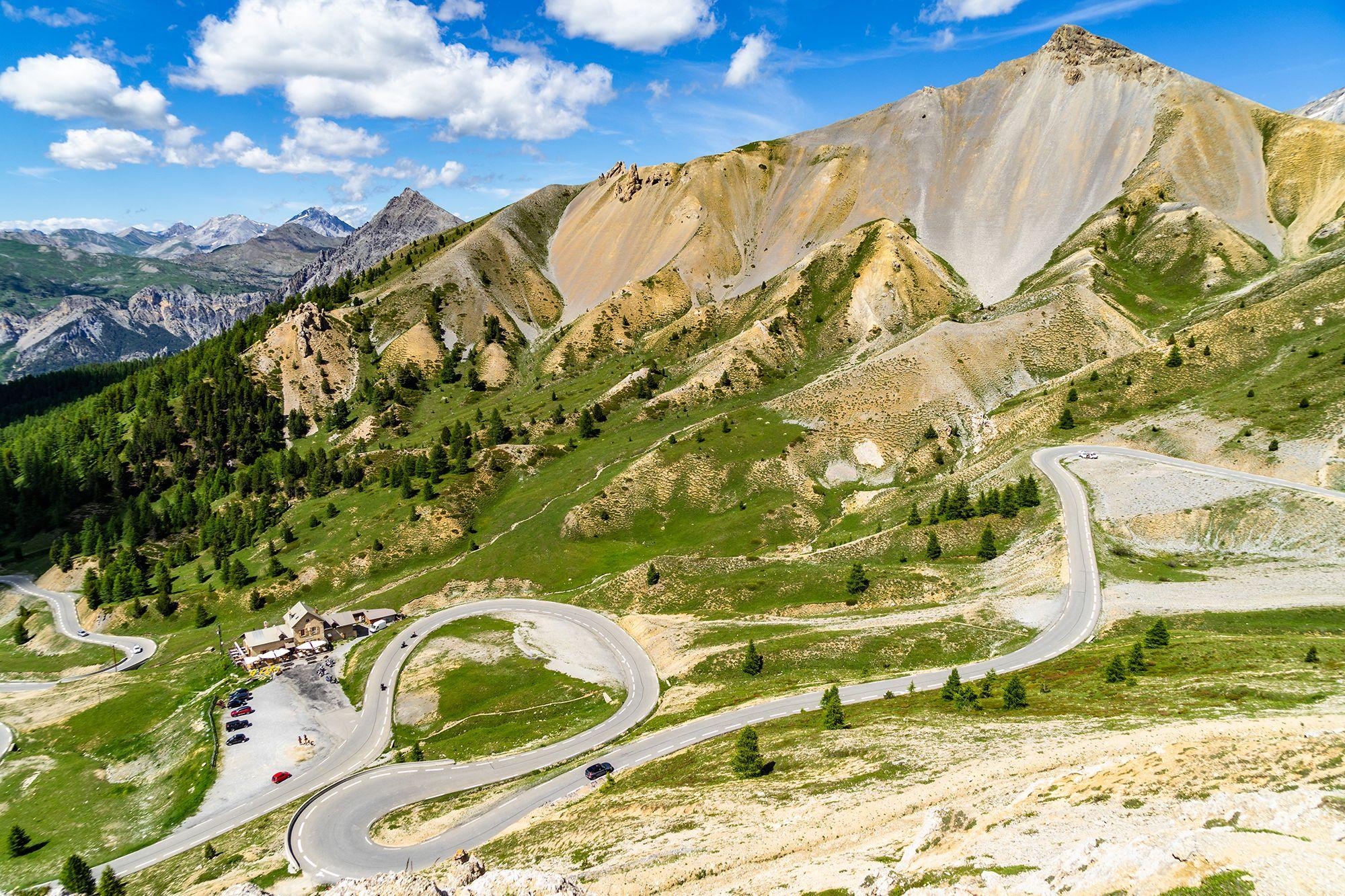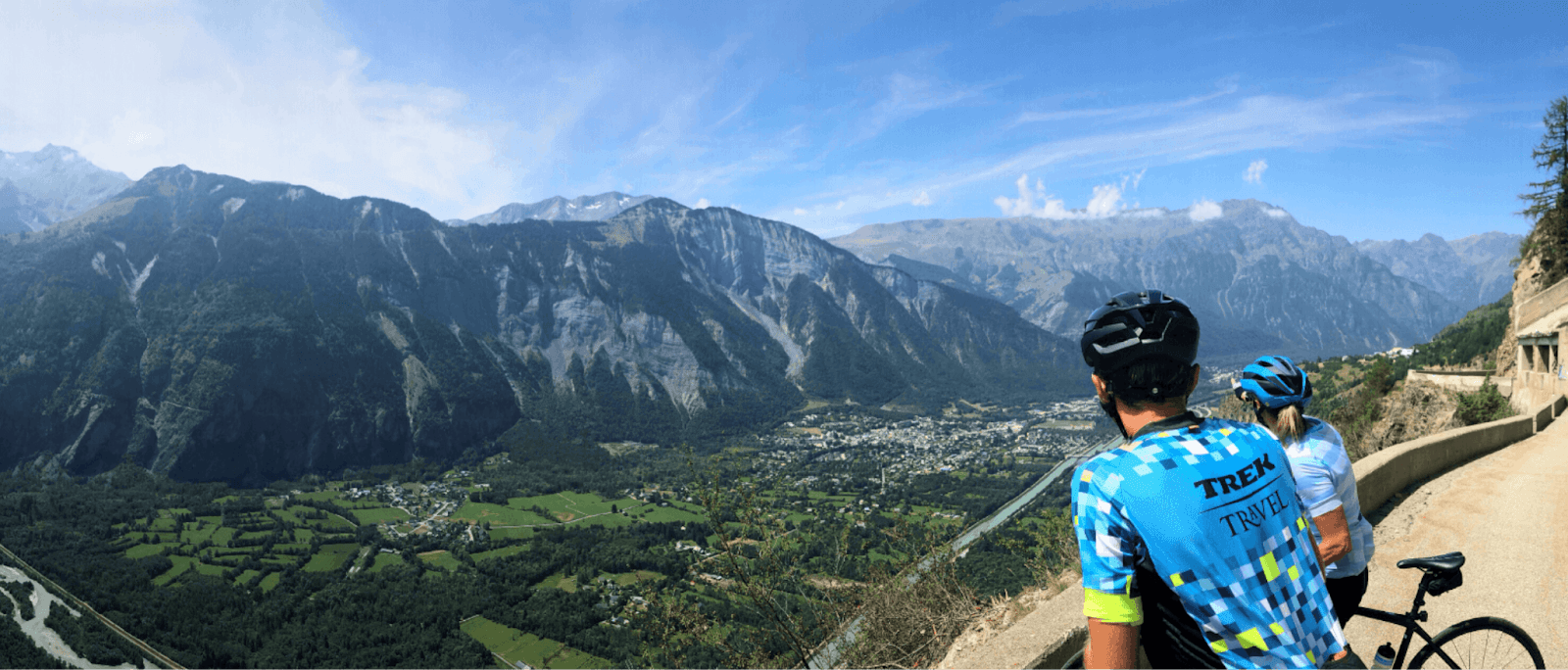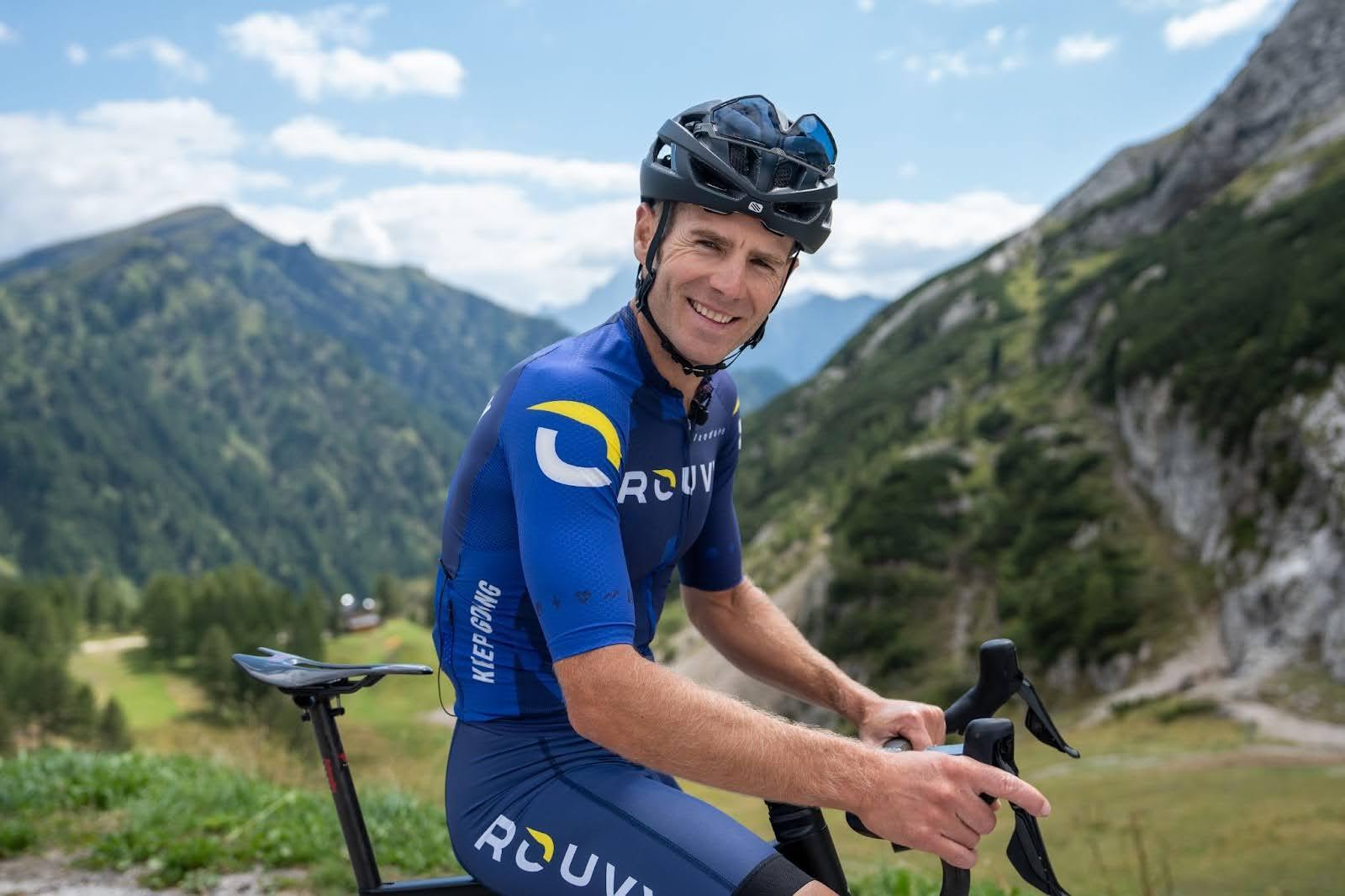The Climb That Started It All
Picture this. You are on your bike, pedaling up a hill you know well. You reach the top, descend, turn around, and start climbing again. And again. And again. The hill is cycled multiple times, with each uphill effort counting as one of the many ascents required to complete the challenge. You keep going until the total elevation gain on your bike computer matches the height of the world’s tallest mountain — Mount Everest at 8,848 meters.
That is Everesting. One hill. One route. One single ride. It is a cycling challenge that pushes you to your physical and mental limits, no matter whether you attempt it outdoors on a mountain road or indoors on a virtual climb.
Most cyclists who take it on are not chasing a race win or a podium. They are chasing a personal challenge. A test of endurance and grit. A ride that, once complete, earns a place in the Hall of Fame on the official Everesting website.
How the Idea Took Shape
The concept came from Australia, home of the cycling club Hells 500 and its founder, Andy van Bergen. The group was known for designing wild endurance rides. Andy was inspired by mountaineer George Mallory, who famously said he wanted to climb Mount Everest “because it is there.”
Mallory’s grandson, also named George Mallory, was part of the early cycling experiments that defined how Everesting works. The rules were simple. Find a hill or mountain with a steady climb. Ride the same route repeatedly until your total elevation gain reaches 8,848 meters. Complete it in a single stint without sleep.
From the beginning, each cyclist approached it in different ways, selecting hills that matched their own ability and preferred strategy. Some picked a constant gradient like Mount Donna Buang in Australia. Others went for a less steep hill to save their legs over the long distance. A few went for a steep hill to reduce the total distance, but that meant higher power on every pedal stroke.
No matter the approach, the formula stayed the same. One hill. One route. One massive effort.
Understanding the Total Distance
One of the most important factors in planning your Everesting attempt is understanding how the hill’s gradient affects your total distance. The steeper the hill, the less distance you’ll need to cover to reach the total elevation gain of 8,848 meters. For example, tackling a steep hill with a 10% gradient might mean riding around 100 kilometers, while choosing a less steep hill at 5% could see you pedaling well over 200 kilometers to complete the challenge. This difference can have a huge impact on your physical endurance and pacing strategy. Cyclists should carefully consider their own strengths and preferences—some may prefer the shorter, more intense effort of a steep hill, while others might opt for a longer, steadier ride on a less steep hill. Online calculators and planning tools can help you estimate the total distance required for your chosen hill, making it easier to prepare for the unique demands of your Everesting attempt.
The Rules Every Rider Must Follow
If you want your attempt to be official, you have to follow the Everesting rules set by Hells 500.
You must climb 8,848 meters of total elevation gain in a single ride.
You have to use the same route for every repeat.
You must complete the challenge in one stint. Sleep is not allowed, though you can take short breaks.
Your ride has to be recorded accurately — GPS for outdoor attempts or a smart trainer with realistic gradient simulation for virtual Everesting.
You submit your ride to Strava, making sure to use the specific Strava segment for your attempt, then send it to the Everesting website for verification.
Each repeat is tracked as a segment, which helps in analyzing your performance and verifying your attempt.

Types of Everesting Challenges
Everesting isn’t a one-size-fits-all challenge—there are several types of Everesting attempts that cyclists can choose from, each offering its own twist on the classic format. Virtual Everesting allows you to complete the challenge indoors on platforms like ROUVY or Zwift, simulating real-world climbs without leaving your home. Outdoor Everesting is the traditional approach, where you take on a physical hill and experience the elements firsthand. For those seeking an even greater test, there’s double Everesting, which involves completing two full Everesting challenges back-to-back, with only a short break in between. Each type of challenge presents unique physical and mental demands, so cyclists can select the format that best matches their goals and abilities. There are even Everesting challenges for runners, including non-shuttled and shuttled options, proving that the spirit of Everesting can inspire athletes across disciplines.
Picking the Right Climb
Choosing your climb is one of the most important decisions in an Everesting attempt.
If you are riding outdoors, look for a steady climb with a constant gradient between 6 and 10 percent. This will let you hold a comfortable cadence without grinding too hard or spinning out. The choice of climb can significantly impact your overall performance, as a consistent gradient and smooth surface help maintain efficiency and reduce fatigue over the course of the challenge. Avoid long flat sections that slow your elevation gain and increase the total distance.
A good descent is short enough that you are back to climbing quickly but long enough to give you recovery time. Smooth pavement will save you from unnecessary fatigue. Low-traffic roads are safer and less stressful, especially if your attempt will involve night riding.
Advice: Take time to research and test different climbs to find one that matches your fitness level and riding style for the best chance of success.
Note: Always check weather forecasts and road conditions before your attempt, as unexpected changes can make even the best climb unsafe or much more difficult.
Some legendary outdoor climbs for Everesting:
- Mount Donna Buang in Australia, known for its smooth surface and steady gradient.
- Haleakalā in Hawaii, a long and beautiful ascent that feels endless.
- Sa Calobra in Mallorca, a twisting ribbon of tarmac loved by climbers.
Notably, Sean Gardner set a world Everesting record by climbing Tanners Ridge in Virginia in 6:59:38, demonstrating the level of achievement possible on these legendary climbs.
If you are going for virtual Everesting on ROUVY, you have different priorities. You want minimal flat sections so every pedal stroke helps you gain elevation. A gradient of 7 to 9 percent is often ideal. Choose a route with a quick descent so you spend most of your time going uphill.
Popular ROUVY routes for Everesting:
- Alpe d’Huez in France, with its famous hairpins and steady slope.
- Passo dello Stelvio in Italy, long and scenic with plenty of rhythm.
- Mount Fuji in Japan, gentle enough for long hours in the saddle.
These virtual climbs have been ridden for impressive distances, with some athletes attempting multiple ascents in a single session. Notably, several Everesting records have been set or challenged on these routes, making them benchmarks for performance in the virtual cycling community.
Outdoor or Indoor?
Everesting can be done outside in the real world or indoors through virtual rides. Both count. Both hurt. The difference is in the experience.
Outdoor Everesting gives you fresh air, real scenery, and the satisfaction of conquering an actual mountain road. But it comes with traffic, weather, and the need to carry or access supplies. You also have to manage your safety when descending, especially if you are tired. Some shuttled descents may involve using a car to return to the base more quickly before starting the next ascent.
Virtual Everesting, also called vEveresting, is done on a smart trainer. It gives you a controlled environment, no cars, and faster descents that help you reach your target sooner. You can attempt it any time of year, in any weather. The challenge is heat buildup indoors and the mental grind of staring at the same walls or screen for hours.
Both formats are extreme endurance challenges that test your physical and mental limits.
How Virtual Everesting Works on ROUVY
The rules for vEveresting are the same as outdoors. One climb, one route, same total elevation gain. The difference is that ROUVY gives you real-world climbs to ride virtually, with your smart trainer simulating the exact gradient.
Setting up your ROUVY Everesting attempt:
- Pick your climb from ROUVY’s library or upload a GPS file.
- Check the gradient and distance, then calculate your repeats.
- Calibrate your trainer and prepare your bike computer to track the ride.
- Set up at least two fans for cooling, and place food and drinks within reach.
- Start rested and fully fueled.
- Ride with steady pacing and monitor your elevation gain closely.
- Upload to Strava and submit to the Everesting website for verification.
Training for the Big Day
An Everesting attempt is not something to try without preparation. Before attempting such a demanding challenge, it is crucial to follow a structured training plan that builds your endurance and climbing ability. It is a complete guide to your endurance limits. You need a plan that builds climbing strength, stamina, and mental resilience.
Start with a strong base. Do long rides of 4 to 6 hours to get used to spending all day on the bike. Include climbing intervals of 10 to 20 minutes at a steady effort. Practice back-to-back long rides to train your body to perform when tired.
Example training paths:
Beginner (16 weeks)
- Weeks 1–6: Three rides per week, including one long ride, one climbing session, and one recovery ride.
- Weeks 7–12: Four rides per week, adding more elevation gain and longer intervals.
- Weeks 13–16: Peak volume, a half-Everesting simulation, then taper.
Intermediate (12 weeks)
- Four to five rides per week. Two climbing days, one long endurance ride, one or two recovery rides, and two strength sessions.
Advanced (8 weeks)
- Focus on high-intensity climbing sessions, long endurance rides, and simulations over 5,000 meters.
Gear and Setup
If you are riding indoors, invest in strong fans to keep you cool. Wear padded bib shorts and use chamois cream to protect your skin. Protect your bike from sweat with a guard and keep everything you need within reach.
If you are outdoors, use compact gearing for steep gradients, lights for visibility, and clothing layers for changing conditions. If possible, arrange for a support crew to hand you food, drinks, and moral support.
Nutrition and Hydration
Fueling well is essential.
Before the ride, eat a high-carb meal 3 to 4 hours before starting. During the ride, aim for 60 to 90 grams of carbs every hour. Alternate between water and electrolyte drinks. Use a variety of foods such as gels, bars, fruit, and small sandwiches to avoid flavor fatigue.
After the ride, have a recovery shake within 30 minutes, then a balanced meal with carbs and protein to restore your energy and repair muscle.

Winning the Mental Game
Everesting pushes your body, but it is your mind that decides whether you keep going.
Break the ride into smaller milestones. Focus on the next repeat or the next 500 meters of elevation gain. Change your music or switch to a podcast to refresh your mind. Use positive self-talk when things get tough. Visualize yourself completing the final climb and seeing your name added to the Hall of Fame.
Coping with Setbacks
Every Everesting challenge comes with its share of setbacks, whether it’s physical fatigue, mental limits, or unexpected equipment issues. The key to completing the challenge is having strategies in place to cope when things get tough. Positive self-talk, visualization, and breaking the ride into smaller goals can help you push through moments of doubt or exhaustion. Having a support crew—friends, family, or fellow cyclists—can provide encouragement, motivation, and practical help when you need it most. Tools like your bike computer and Strava segments can help you track progress and stay focused on your next milestone. By preparing for setbacks and knowing how to respond, you’ll be better equipped to overcome obstacles and keep moving forward toward completing your Everesting challenge.
Common Mistakes
Starting too fast is the most common error. Indoor riders sometimes underestimate the need for cooling. Outdoor riders sometimes pick a climb that is too steep or too flat. Many riders fail to test their nutrition plan ahead of time, which can lead to stomach issues on the day.
Stories from the Road and Trainer
One outdoor rider completed Mount Donna Buang in under 15 hours by keeping a steady pace, eating every 20 minutes, and keeping stops short.
A ROUVY rider conquered Passo Giau in 11 hours and 45 minutes. They relied on two high-powered fans, a strict power target, and three different playlists to break up the monotony.
Another rider attempted a steep hill to cut down distance but overheated and quit at 6,000 meters. Their takeaway was simple: the right route makes or breaks your attempt.
The Halfway Wall
Halfway through an Everesting attempt is when many riders struggle the most. The excitement has faded and the finish feels far away. This is when you need small mental tricks — switch playlists, change your focus, or have a friend ride with you for a section.
Recovery
After such a huge effort, your body will need time. Rest completely for two days, then take gentle recovery rides or walks. By the end of the first week, start easy endurance rides if you feel ready. Most riders wait several months before another major endurance event.
The Hall of Fame
Completing an Everesting challenge is a monumental achievement, and the Everesting Hall of Fame is where your effort gets Tips: Optimize your rest & recovery for better cycling | ROUVY recognized. Maintained by the official Everesting website, the Hall of Fame lists cyclists who have completed the challenge, along with their ride details and completion times. To earn your place, you’ll need to submit your ride data for verification after your attempt. Being included in the Hall of Fame is more than just a badge of honor—it connects you with a global community of cyclists who have pushed themselves to the limit and succeeded. It’s a source of inspiration for those planning their own attempt and a way to celebrate the dedication and determination it takes to complete the challenge.
Benefits of the Challenge
Taking on the Everesting challenge offers rewards that go far beyond the ride itself. Cyclists who complete the challenge often experience a significant boost in endurance and mental toughness, learning to push past their perceived physical and mental limits. The sense of accomplishment and pride that comes from reaching the summit—whether outdoors or virtually—is hard to match. Beyond personal growth, the challenge connects you with a supportive community of like-minded cyclists who understand the effort and commitment involved. The camaraderie, encouragement, and shared stories make the journey even more meaningful. Ultimately, completing an Everesting challenge is a powerful way to test yourself, build resilience, and become part of a worldwide network of athletes who know what it means to conquer 8,848 meters in a single ride.
Why ROUVY Makes Sense
ROUVY offers accurate real-world climbs, a safe environment without cars, and faster descents that let you focus on climbing. The community of riders can provide support and motivation, especially on long virtual rides.
Ready to Try?
Everesting is more than a cycling challenge. It is a personal journey that tests everything from your pacing and nutrition to your willpower and patience. Whether you ride a legendary mountain road or a famous climb on ROUVY, reaching 8,848 meters in one ride is something you will never forget.
Plan your route. Train with purpose. Respect the rules. And when you finally complete the challenge, you will know you have done something that most cyclists will only dream about.



